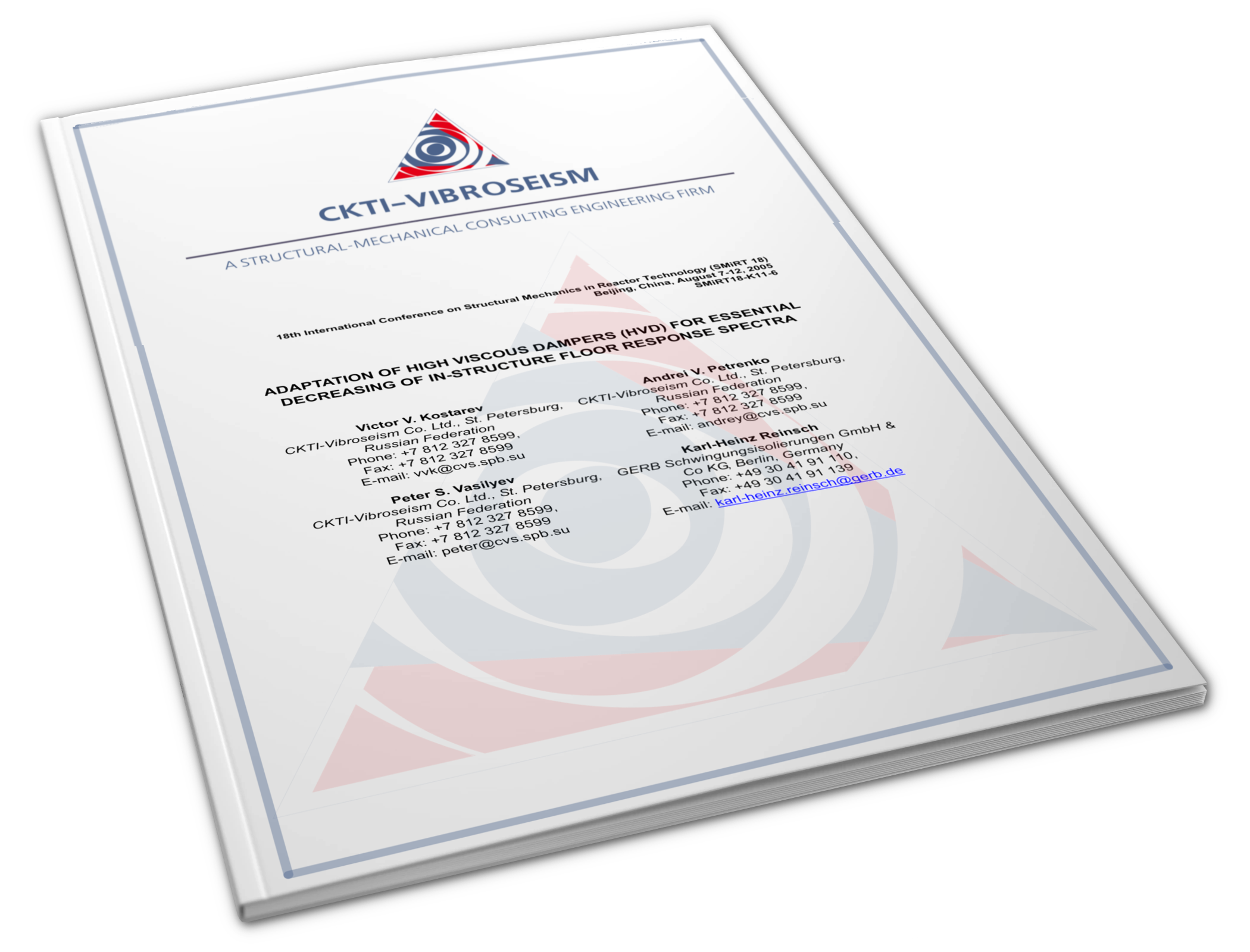Adaptation of High Viscous Dampers (HVD) for Essential Decreasing of In-Structure Floor Response Spectra
SMiRT-18, Beijing, China, August 7-12, 2005. Paper N K11-6

- Авторы: : Костарев В.В. [Viktor V. Kostarev], Петренко А.В. [Andrei V. Petrenko], Васильев П.С. [Peter S. Vasilyev], Karl-Heinz Reinsch
- Редактор: English
- Страницы: 12
- №: 17
- Библиотека: Conference Papers
- Год: 2005
- Файл: SMiRT18-K11-6
Просмотры: 2711
This paper concerns a further development of High Viscous Damper (HVD) approach for essential decreasing of structure’s floor response spectra. Usually restraining of components and pipelines by HVD is used for significant decreasing of operational vibration and seismic loads. A new approach consists of dampers installation for essential upgrading of a whole system’s damping that is much more efficient in both technical and economical points of view than restraining of each component of the system. In that way using of HVD means high energy dissipation for whole dynamic system “Building-Components’ subjected to the base seismic or other extreme load excitation.
The specific feature of each NPP site is an existing of a few closely spaced buildings: reactor building, turbine hall and so on. As the rule such buildings play sufficiently different roles in NPP operation and therefore have ufficiently different design, natural frequencies (periods) and distortion of floors and different rocking modes on a soil. The main idea explained in the paper is an interconnection of buildings by HVD. Then differences in their mechanical properties provide their out-of-phase relative motions during an earthquake and therefore effective dissipative work provided by HVD devices. At the same time implementation of HVD approach allows to eliminate possible interactions and collisions in the gaps between building structures that wears potential threat of building failure.
The detailed 3D finite element models of reactor building, turbine hall and special building were developed for NPP with VVER-1000 MWt reactor type. Performed analysis has shown high efficiency of suggested approach for protection of buildings, structures, systems and components against seismic and other impacts.
 ООО «ЦКТИ-Вибросейсм»
ООО «ЦКТИ-Вибросейсм» 
